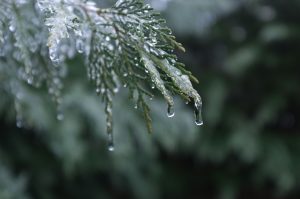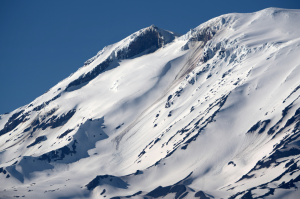Melting of the Cascade Mountain Snowpack in Spring
The date of 1 April is often considered the end of winter for the Cascade Mountains of the Pacific Northwest. Snow can continue to fall in the high country, of course, but the vast majority of the accumulation has generally occurred by that time of year.
Read moreKona Storms and Winter Weather in WA State
As detailed here, the month of February 2019 will long be remembered for its snowy weather, especially in the lowlands of western Washington. We are not the only place that has experienced some unusual conditions – here we direct our attention to Hawaii, and in particular the “Kona” storm that slammed the state during the second week of the month.
Read moreWhat a Blast: The Arctic-Air Outbreak of February 1989
This edition of the OWSC newsletter more or less coincides with the 30th anniversary of the severe cold snap of early February 1989. Last month we reviewed the record warm anomalies that occurred in January 1953; perhaps it makes some sense to take a look at the other side of the coin.
Read moreJanuary 1953: Largest Positive Monthly Temperature Anomaly in WA State History
Considering statewide averages, what would constitute a large monthly anomaly in temperature? And would we expect to see the largest monthly anomaly in winter or summer? At OWSC, these are the sorts of questions that we ask ourselves as we begin a new calendar year.
Read moreThe Return of Warm Water to the NE Pacific
The intense marine heat wave (MHW) of 2014-16 in the NE Pacific, aka the “Blob”, received a great deal of attention and deservedly so. When relatively warm sea surface temperatures (SSTs) emerged in the Gulf of Alaska in late summer/early fall 2018, both those monitoring the North Pacific atmosphere ocean climate system, and the media, began speculating whether a new MHW might be developing.
Read moreEl Niño Flooding: Flashback to November 2006
The “El Niño watch” issued by the Climate Prediction Center is still in effect, with the expectation that a weak or moderate El Niño will develop this winter. Appropriately, media reports have focused on the increased odds of a warmer and drier winter due to El Niño, with the warmer than usual temperatures being more likely to occur.
Read moreEffect of ENSO on Early Season Snowfall in the Washington Cascades
Most readers of this newsletter are probably aware that El Niño winters tend to result in relatively skimpy snowpacks, and that El Niño development is more likely than not during the upcoming winter.
Read moreNew Visualization: Updated PNW Temperature, Precipitation, and Snow Water Equivalent Trend Tool
OWSC, in partnership with UW’s Climate Impacts Group, is pleased to announce that our new Pacific Northwest Trend Analysis tool is now available for exploration: https://climate.washington.edu/climate-data/trendanalysisapp/. An older and outdated version of this tool using the Google Maps interface was formerly the most popular tool on OWSC’s website, allowing users to select and view trends in the PNW for temperature, precipitation, and snow water equivalent.
Read moreClimatology of WA’s West Olympic Coast Climate Division (#1)
It has long been a vision of OWSC to feature a 10- part “Climate Division of WA” series in our newsletter, describing the climate of the 10 NOAA Climate Divisions, individually.
Read moreSteep Decline in Streamflows in Washington State
The total statewide averaged precipitation for the 2018 water year to date (1 Oct through 30 June) has been about 3.6” above normal. There was a healthy snowpack on 1 April — the traditional end of winter from the snowpack perspective — with snow water equivalent (SWE) values ranging from about 136% of normal in the Upper Columbia region to 98% in the southern Puget Sound region.
Read more

